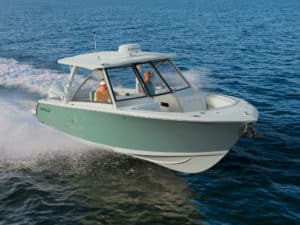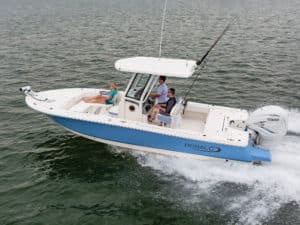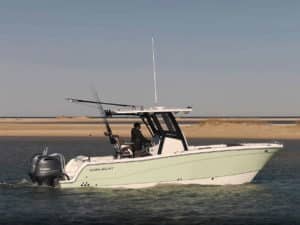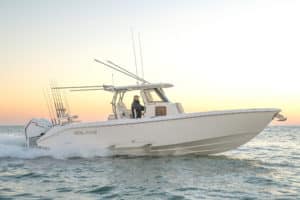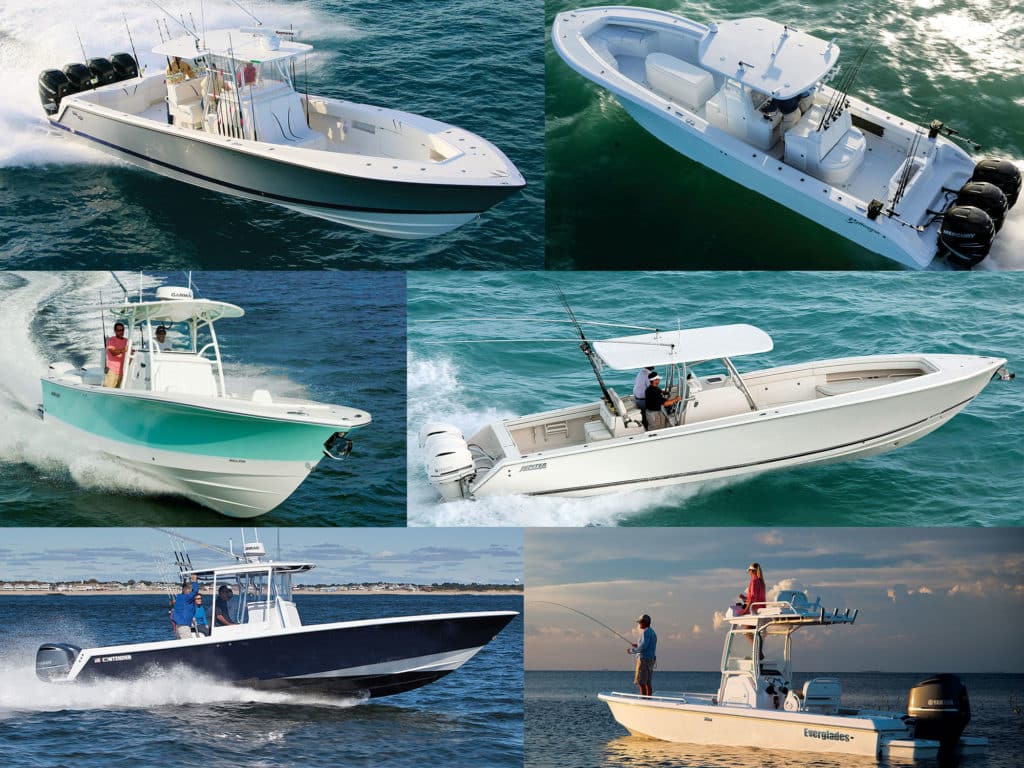
“Classic” connotes timeless style. Classic means enduring worth. Classic oozes cool.
So when someone mentions “classic boat,” what comes to mind? If you’re like me, you recall the Bertram 31, the Whaler 17 Montauk or the 21 SeaCraft. You might even think of a 1960s wooden Grady-White or a teak-laden Chris-Craft cruiser.
But what will tomorrow’s classics look like? We decided to hazard a guess, based on the popularity of several hulls well‑known to most readers, hulls that have been on the market at least five years. (If you agree with us, or have better suggestions, you can share your thoughts on the Sport Fishing Facebook page this month. Look for the Classic Boats posts.)
Contender 32 ST
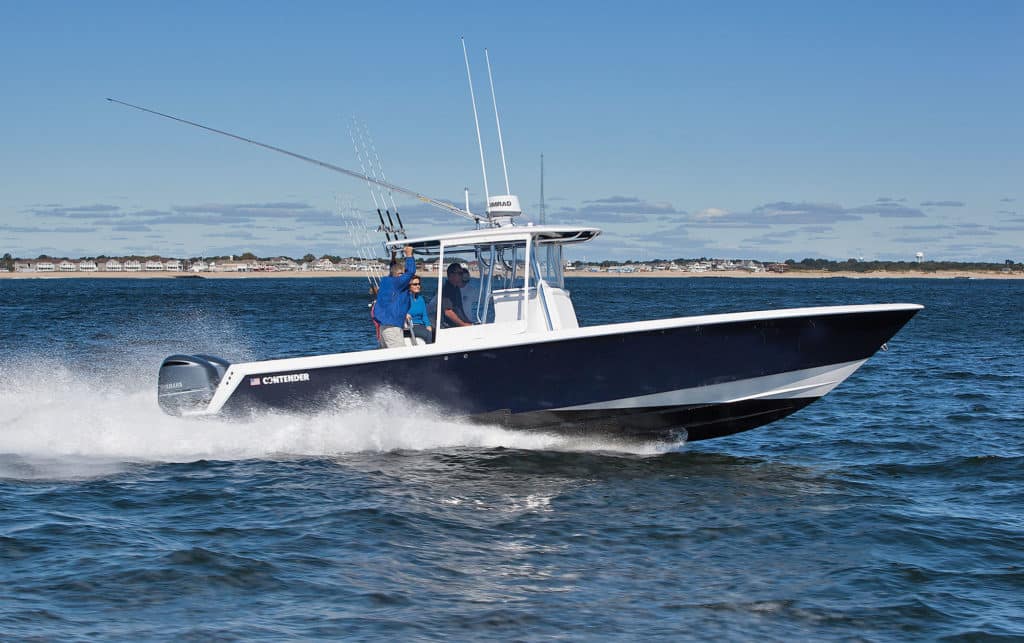
Introduced in 2010, the 32 ST gained instant popularity because it replaced the long-beloved 31 Contender, says Jordan Delong, director of sales and marketing for the Homestead, Florida, boatbuilder. For years, 30-ish-footers, such as the 31, dominated the Southern Kingfish Association tournament circuit as the perfect compromise of fishability, affordability and performance.
Standard Features
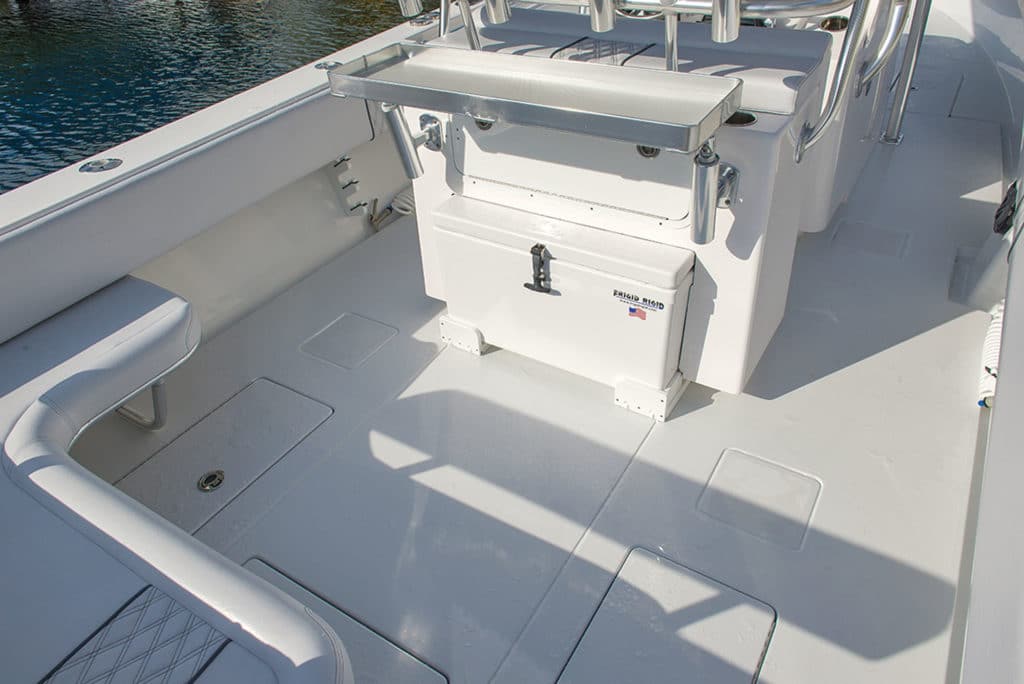
Standard features of the 32 ST include a one-piece, level deck fore and aft — a major plus for anglers working trophy fish around the boat — twin 40-gallon pressurized livewells, a walk-through transom, four lined and insulated fish boxes, lockable electronics panel, locking rod boxes forward, and K-Plane trim tabs. Notable options include a forward coffin box, a tackle center, customized T-tops, additional livewells and more rod holders than you can count.
In Yamaha performance tests, the stepped-hull 32 with twin F300s topped out at 63.1 mph, turning 5,900 rpm and achieving 1.2 mpg. It took just 4.6 seconds to plane and reached 30 mph in 7.2 seconds. The boat cruises most comfortably and economically at 3,500 rpm, running 38.3 mph and offering 2.09 mpg.
Contender 32 ST Specifications
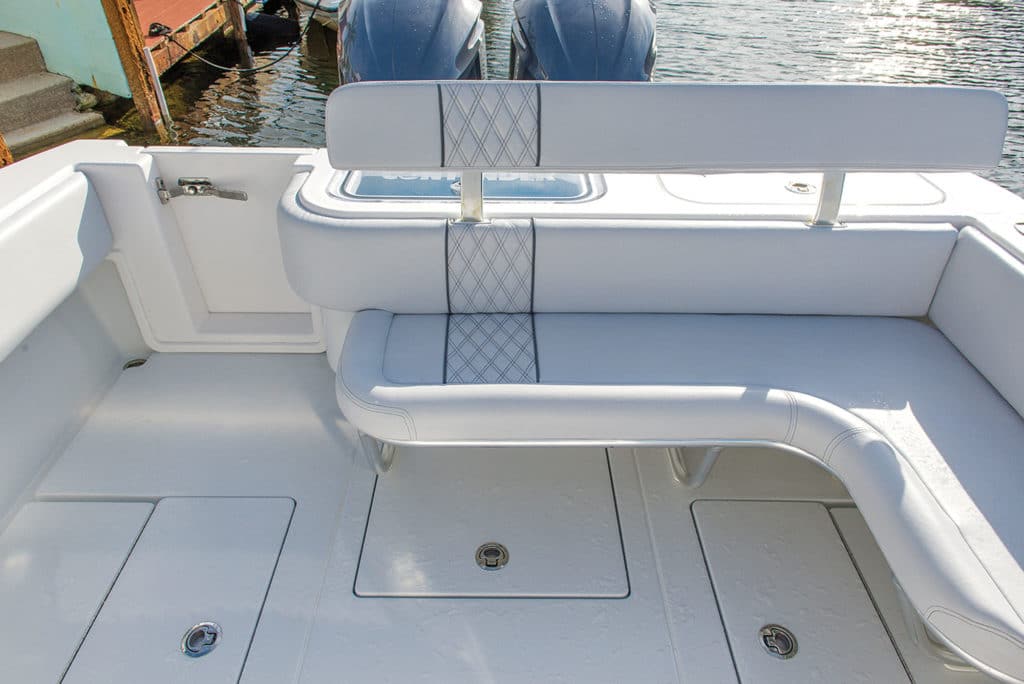
SPECS: LOA: 32 ft. 8 in. • Beam: 9 ft. 8 in. • Transom Deadrise: 24½ deg. • Draft: 1 ft. 8 in. • Dry Weight: 5,850 lb. (w/o engines) • Max Power: 700 hp • MSRP: N/A
Everglades 243CC
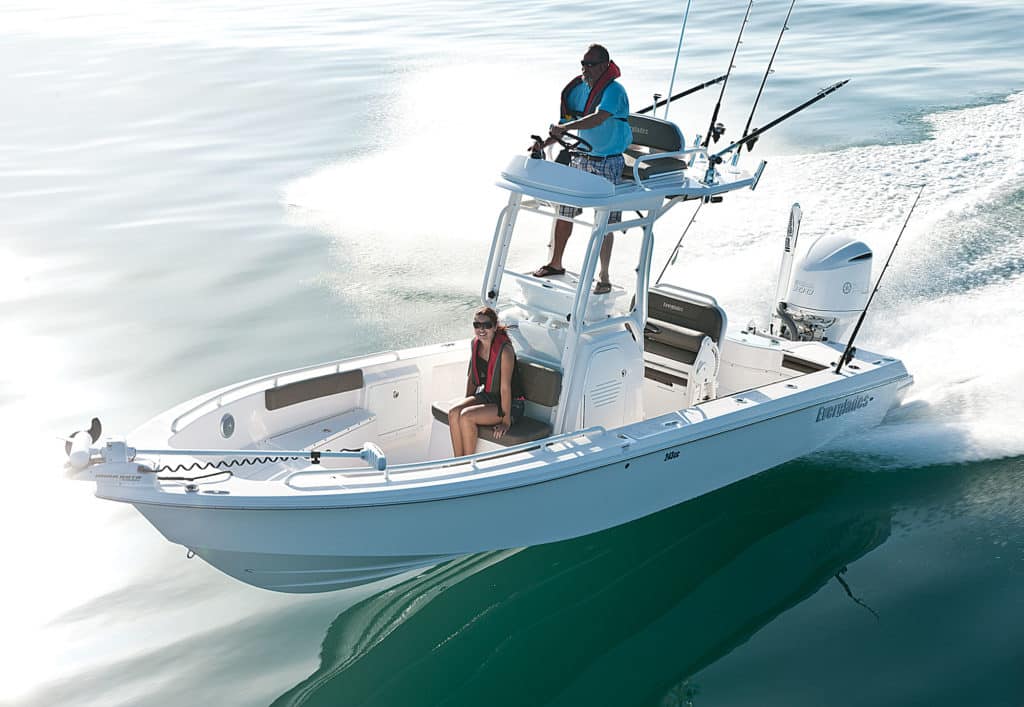
For more than 12 years, the 243cc has grown in popularity, remaining the company’s top-selling model by a wide margin, says Shane Kwaterski, Everglades director of dealer development. “The 243cc should become a classic because of its revolutionary design,” he says. “While 24-foot bay boats did exist when this hull debuted in 2004, none had this kind of hull design. It’s truly two boats in one: an offshore front with cut-down gunwales, and it flattens out at the [19-degree] transom.”
RAMCAP Construction
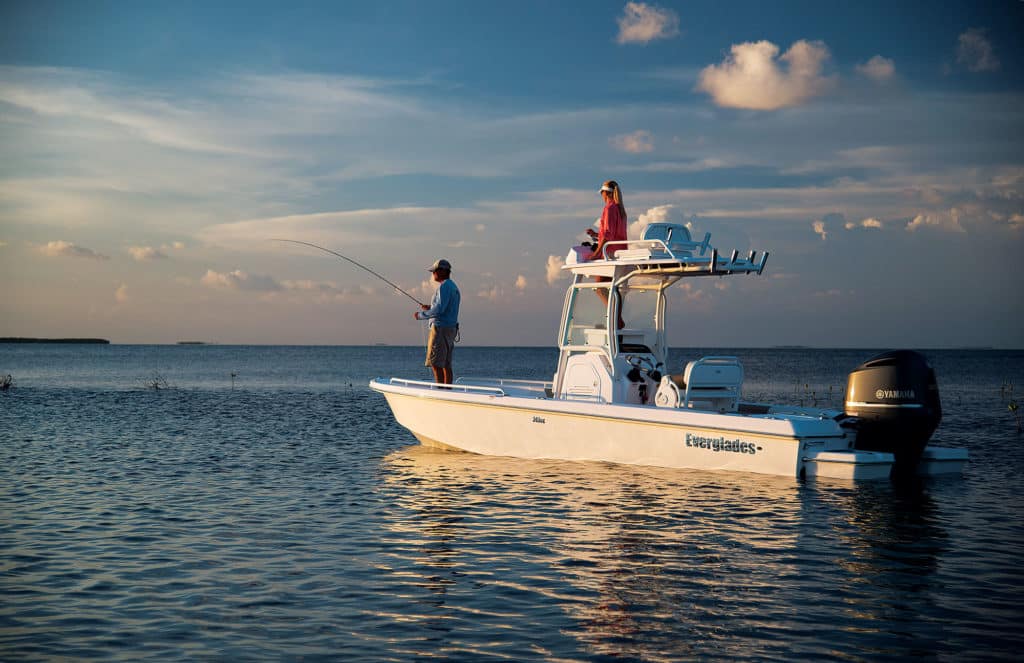
In addition to its hybrid hull, the 243 also features Everglades’ RAMCAP construction and patented sliding, adjustable windshield, which ties to a hardtop assembly. That was a first at the time, Kwaterski says. The 243 also featured powder coating on the superstructure, which had been a popular big-boat attribute until the mid-2000s.
For anglers, the 243 comes with a 36-gallon livewell standard, a 67-gallon forward fish box, 65-quart Yeti cooler, undergunwale power ports and rod racks, tackle lockers, and lockable rod storage. Power steering also comes standard on the 243, as does a hardtop with rod holders and an electronics box.
Everglades 243cc Specifications
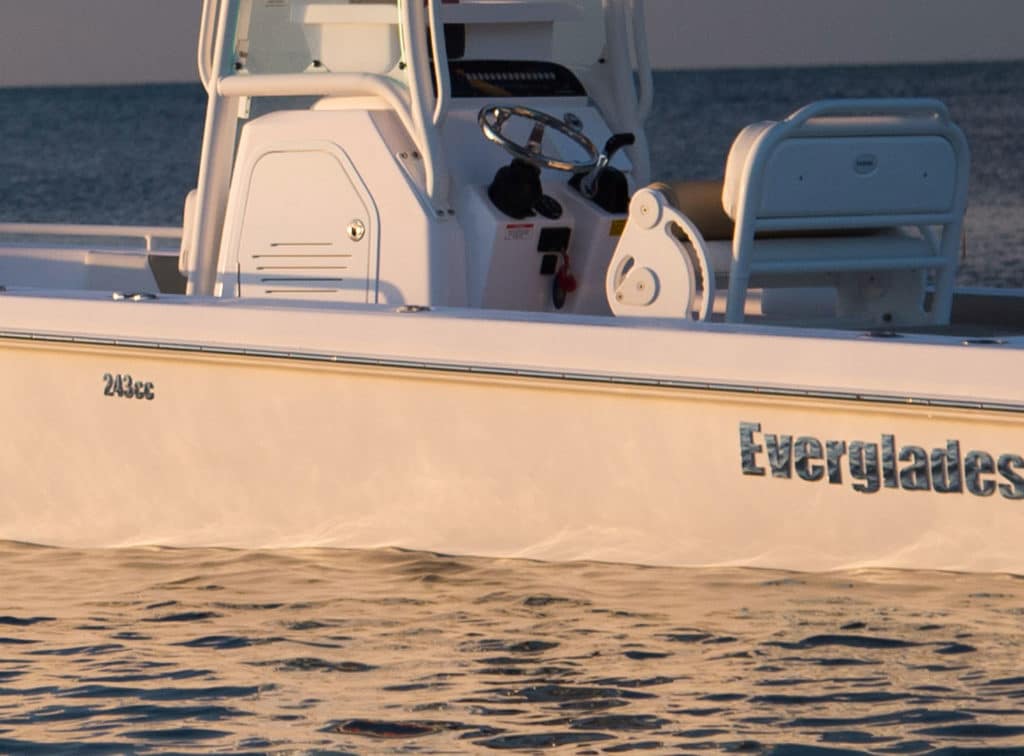
SPECS: LOA: 25 ft. 8 in. • Beam: 8 ft. 2 in. • Transom Deadrise: 19 deg. • Draft: 1 ft. 4 in. (hull only) • Dry Weight: 4,000 lb. (w/o engine) • Max Power: 300 hp • MSRP: $110,986 (w/ Yamaha F300)
Jupiter 38 FS
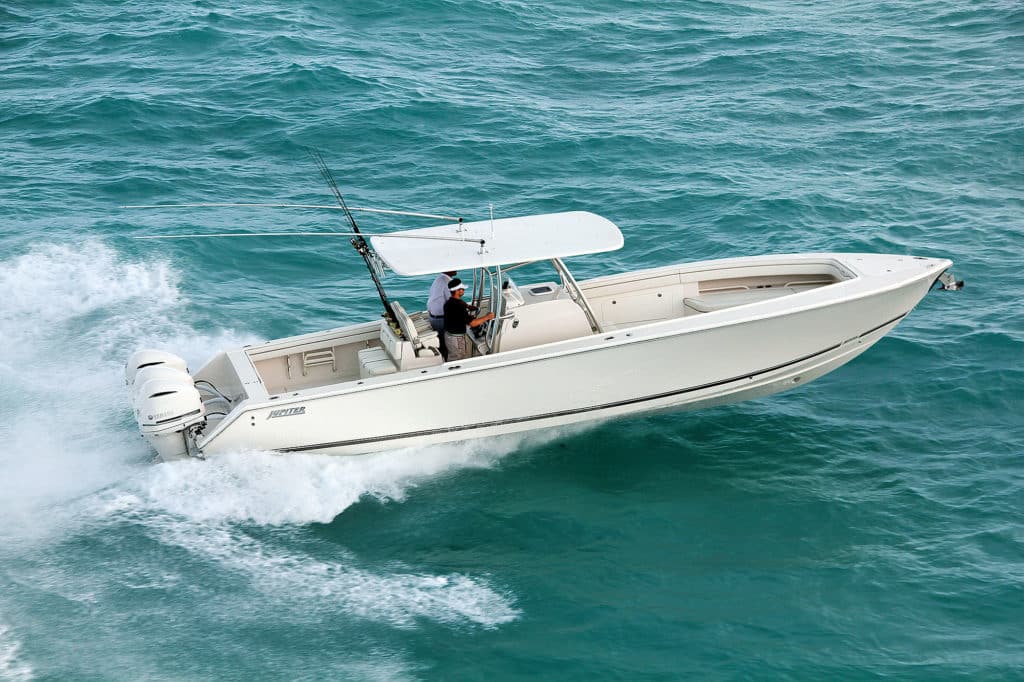
Jupiter says that in 2004, its 38 FS ushered in the large custom center console trend — a new market showcasing vessels now in the high 30s, 40s and even 50-plus-foot range. Building on its strong debut, the 38 FS has been a top performer ever since, Jupiter says.
What does it have in common with other classics? Its versatile layout makes it a multiuse platform for fishing, diving, cruising and entertaining.
Standard Features
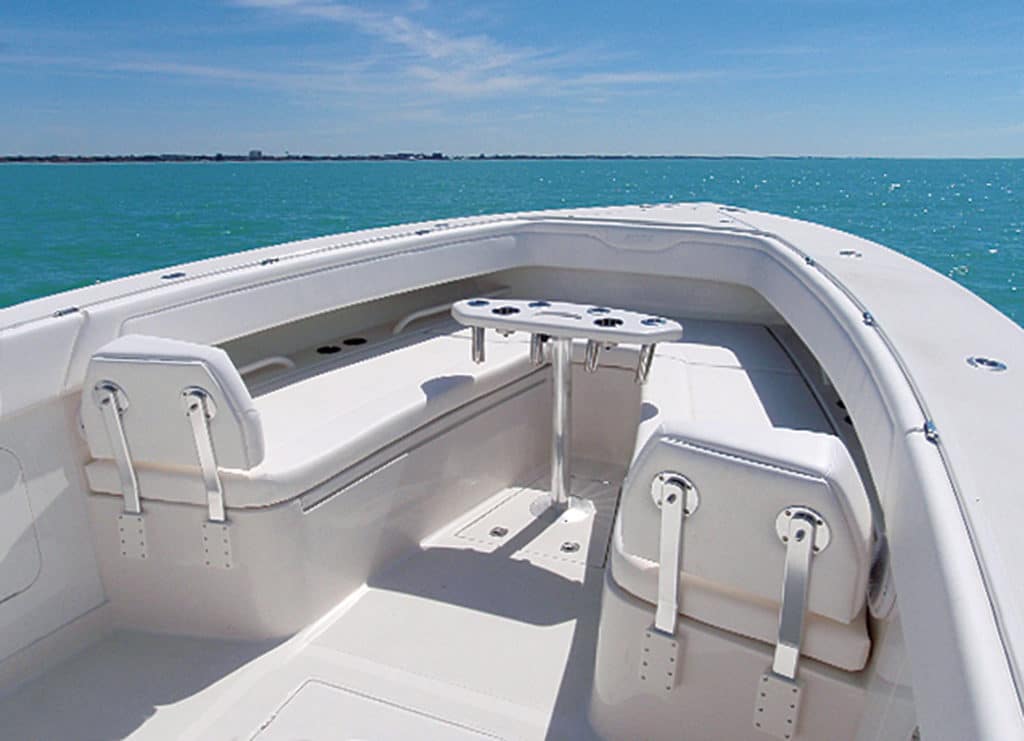
Its standard features include a bait-prep center with a 53-gallon livewell, tackle storage, sink and shower; a pair of 104-gallon fish boxes with macerator drains; twin 38-gallon transom livewells; lockable rod storage forward; an oversize console with stand-up head; electronics compartment; and indirect LED cockpit lighting.
Yamaha performance tests of the 38 FS powered by triple F300 outboards showed a top speed of 61.1 mph at 5,750 rpm, achieving .78 mpg. The boat planed in 4.63 seconds and reached 30 mph in 7.63 seconds. The optimal, most fuel-efficient cruising speed came in at 35.9 mph, with the engine turning 3,500 rpm, offering 1.31 mpg.
Jupiter 38 FS Specifications
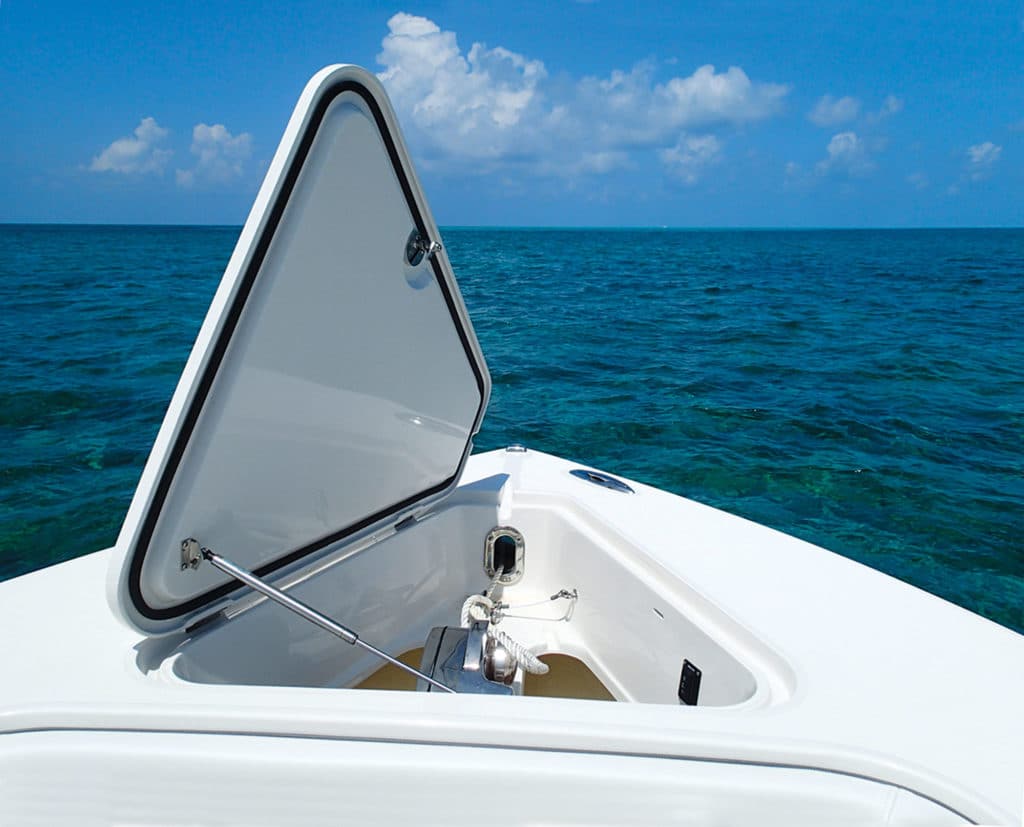
SPECS: LOA: 38 ft. 2 in. • Beam: 10 ft. 7 in. • Transom Deadrise: 24 deg. • Draft: 2 ft. • Dry Weight: 11,480 lb. (w/ engines) • Max Power: 1,050 hp • MSRP: $321,590 (w/ twin Yamaha F350s)
Regulator 28
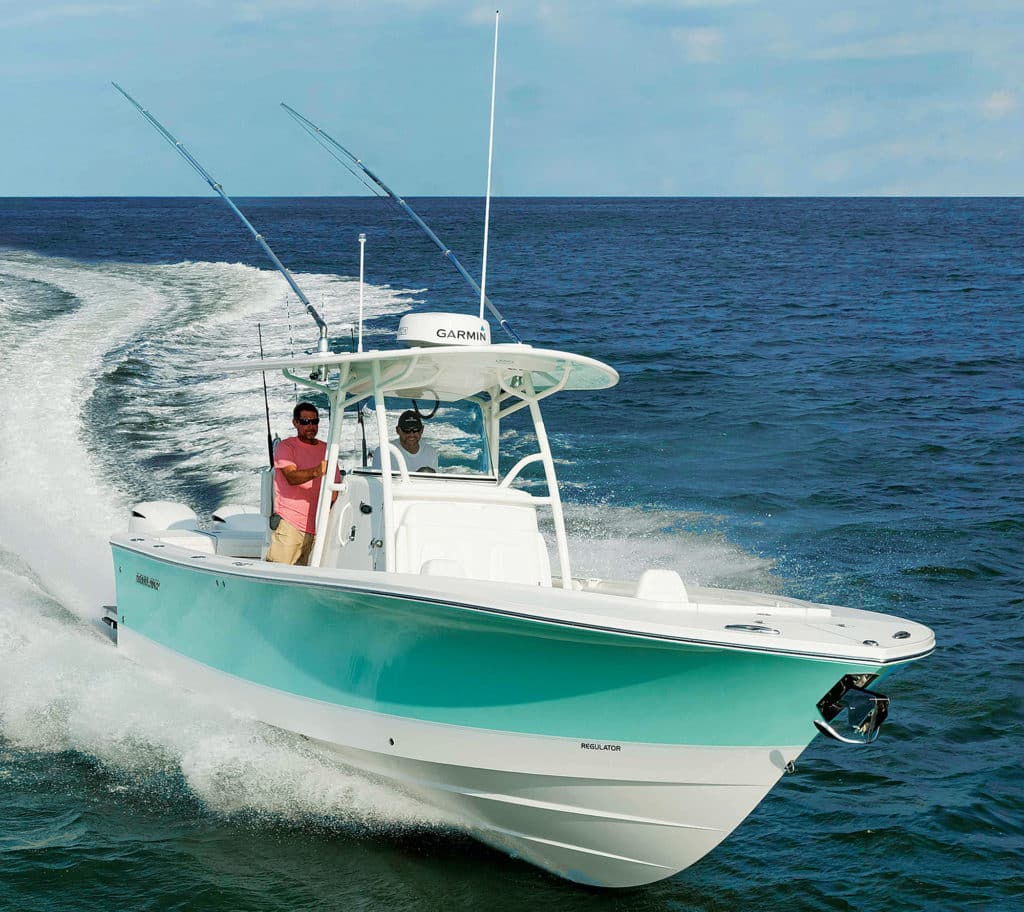
The 28 took over the popularity of its predecessor, the 26, which had been the “boat that redefined the deep-V center console and first earned Regulator a spot among the ‘classic’ sport-fishing boats of all time,” says Carrie Waible, Regulator spokeswoman.
Introduced in 2010 (2011 model year), the 28 became an instant bestseller. “It has set the course for the next generation of Regulator boats, maintaining every asset that made the 26 a classic, while making every feature better, larger, cleaner, faster, smoother and drier,” she says.
Regulator president Joan Maxwell says the 28 debuted just as the industry started creeping out of the recession, so it met some pent-up demand. “We introduced it as the next 26, based on all the things we learned from our owners on what they loved about the 26, and what they wished it had but had been limited by its size.”
Regulator had a 29 in the lineup when the 28 came out, Maxwell says. But the 29 featured a Euro-transom, so with its bracket, the 28 was actually bigger.
Asked what this boat has in common with other classics, Waible suggests its solid build, weight-to-horsepower ratio and predictable handling. Or as Maxwell puts it: “Ride, ride, ride.”
Regulator’s stringer system is bonded to the hull and injected with foam to create a solid unit, Waible says. “The entire process occurs when the stringer and hull are inside the mold, to deliver the extra strength and stability you expect from Regulator.”
In addition, the weight and depth of the hull guarantee a lower center of gravity, which results in better performance.
Regulator 28 Specifications
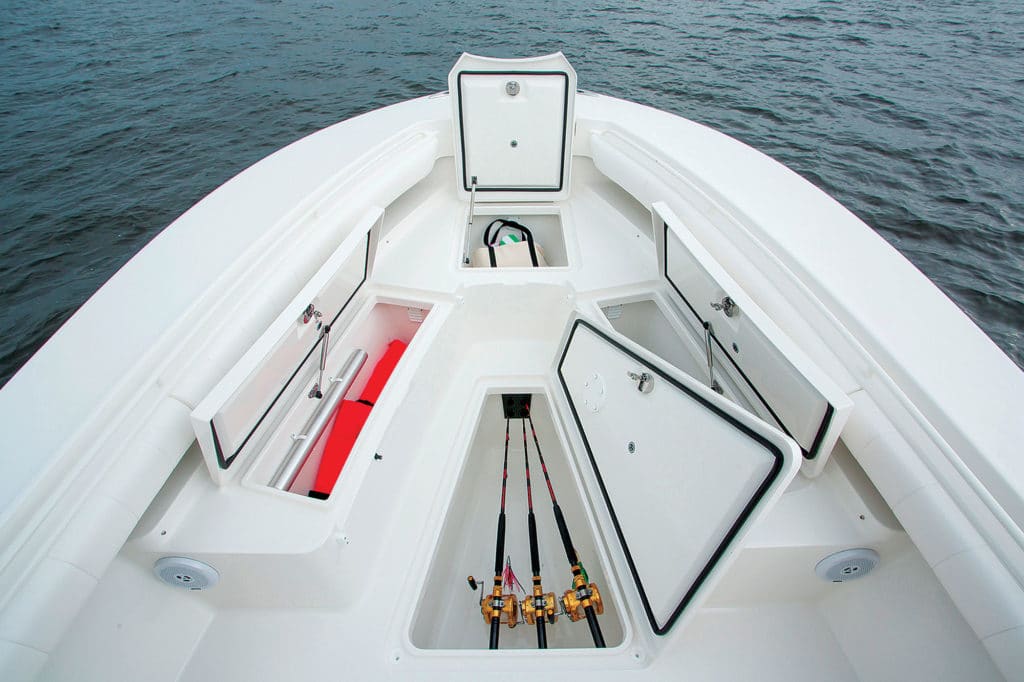
SPECS: LOA: 32 ft. 6 in. (w/ bracket and engines) • Beam: 9 ft. 5 in. • Transom Deadrise: 24 deg. • Draft: 2 ft. • Dry Weight: 8,260 lb. (w/ engines) • Max Power: 600 hp • MSRP: $199,995*
SeaVee 390
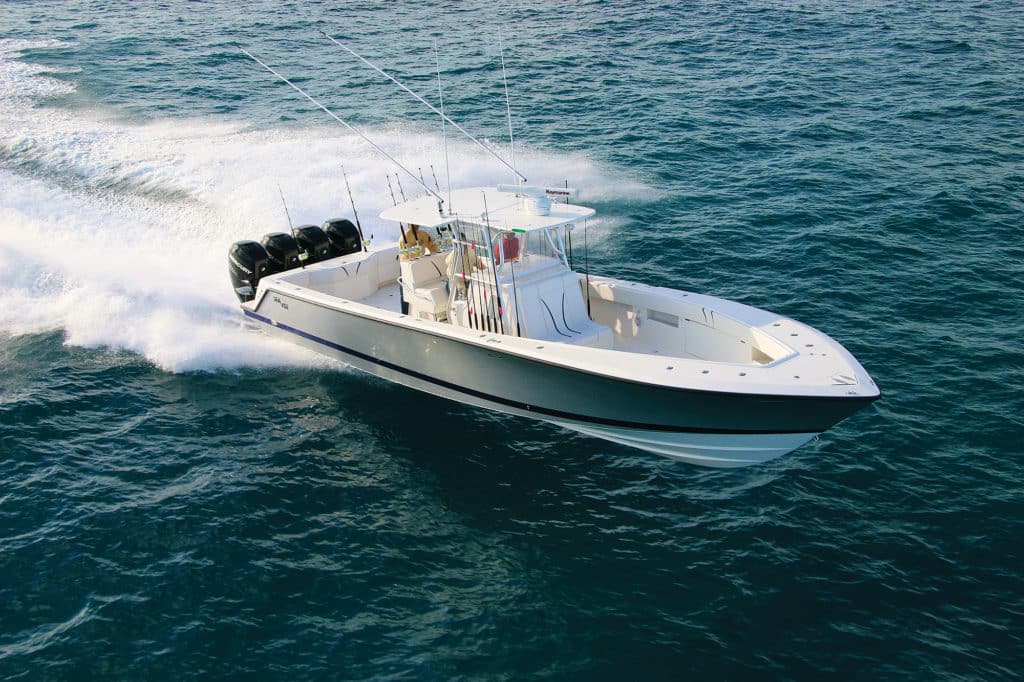
When SeaVee introduced the 390 in 2006, it kicked the large center console up a notch with its four outboards on the transom. In fact, SeaVee says, the 390 was the first boat to feature quad Mercury Verado 300s.
“Its massive aft cockpit and sliding-front-door console were unique in the marketplace,” says John Caballero, SeaVee marketing director. “The 390 is a boat that had great heritage, but it also offered us a platform to innovate and question everything. It featured a from-scratch console that embodied years of experience but was also free from the limits of older geometry.”
SeaVee 390 Features
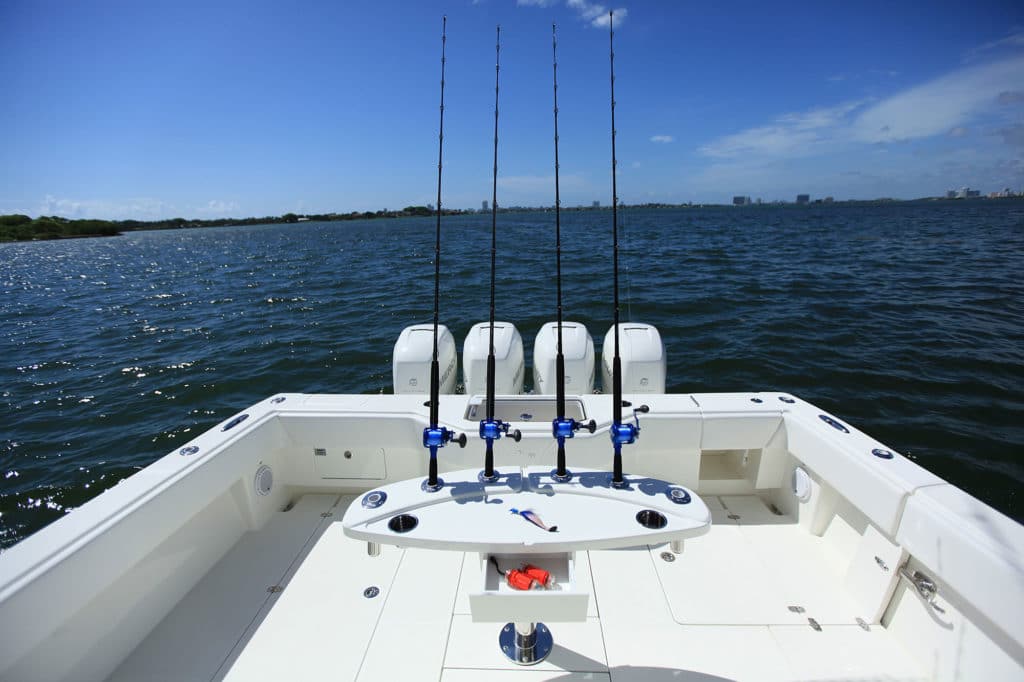
SeaVee put the 390 to the test, running it from Key West, Florida, to Isla Mujeres, Mexico — a 400-mile open-ocean crossing — with popular television personality, the late Jose Wejebe. The crew fished around the island for several weeks, taping Wejebe’s Spanish Fly TV show.
“The 390, for me, is one of my crowning design and engineering achievements, and it changed my life,” says SeaVee designer Rob Kaidy. “I think that it has touched and changed the lives of many others, and will continue to do so long into the future.”
SeaVee 390 Specifications
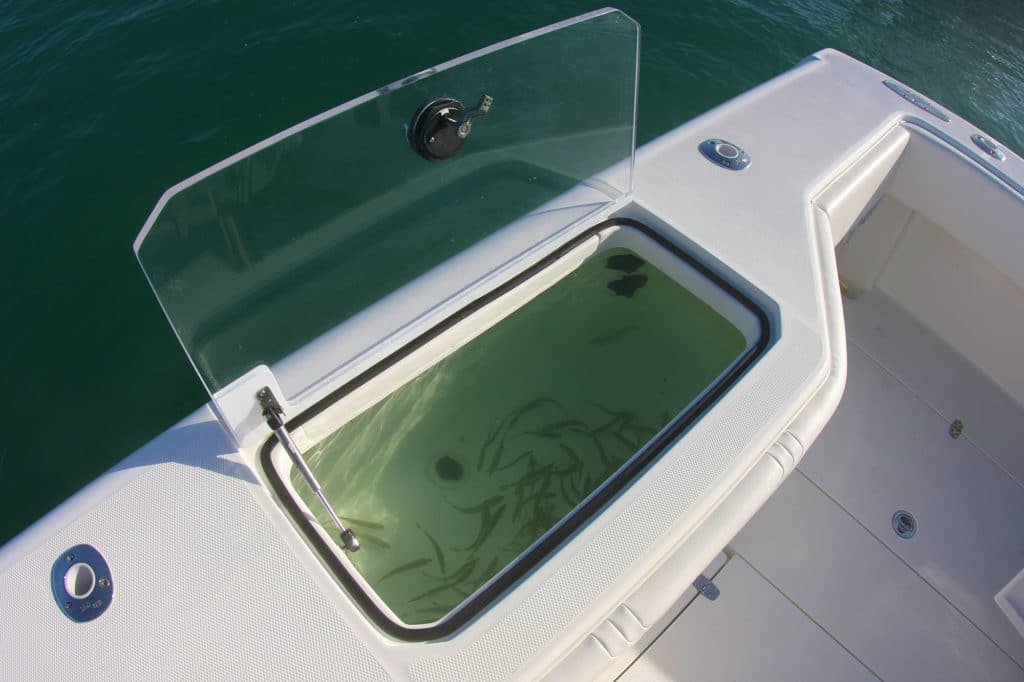
SPECS: LOA: 39 ft. • Beam: 11 ft. • Transom Deadrise: 22½ deg. • Draft: 2 ft. 2 in. • Dry Weight: 10,750 lb. (w/o engines) • Max Power: 1,600 hp • MSRP: $300,700 (w/ triple Mercury Verado 300s)
Yellowfin 36
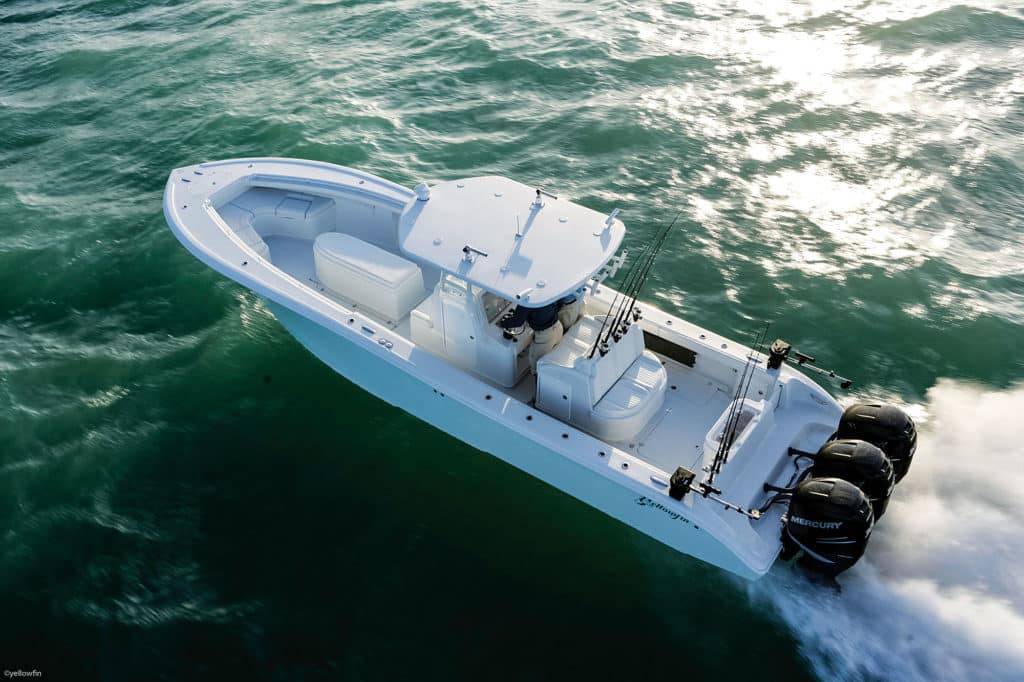
Back in 2003, offshore tournament circuits still claimed great popularity and participation. [Yellowfin](Back in 2003, offshore tournament circuits still claimed great popularity and participation. Yellowfin introduced the 36 to provide extended range to those competitive fishermen, many of whom ran 200 miles or more to their hot spots. Anglers aboard these boats took many championship wins, crowning the 36 as a go-to tourney choice. Yellowfin says that fishability and performance — tweaked over the years and combined with the 36’s unique lines — places it on par with other classics.) introduced the 36 to provide extended range to those competitive fishermen, many of whom ran 200 miles or more to their hot spots.
Anglers aboard these boats took many championship wins, crowning the 36 as a go-to tourney choice. Yellowfin says that fishability and performance — tweaked over the years and combined with the 36’s unique lines — places it on par with other classics.
Proven Pedigree
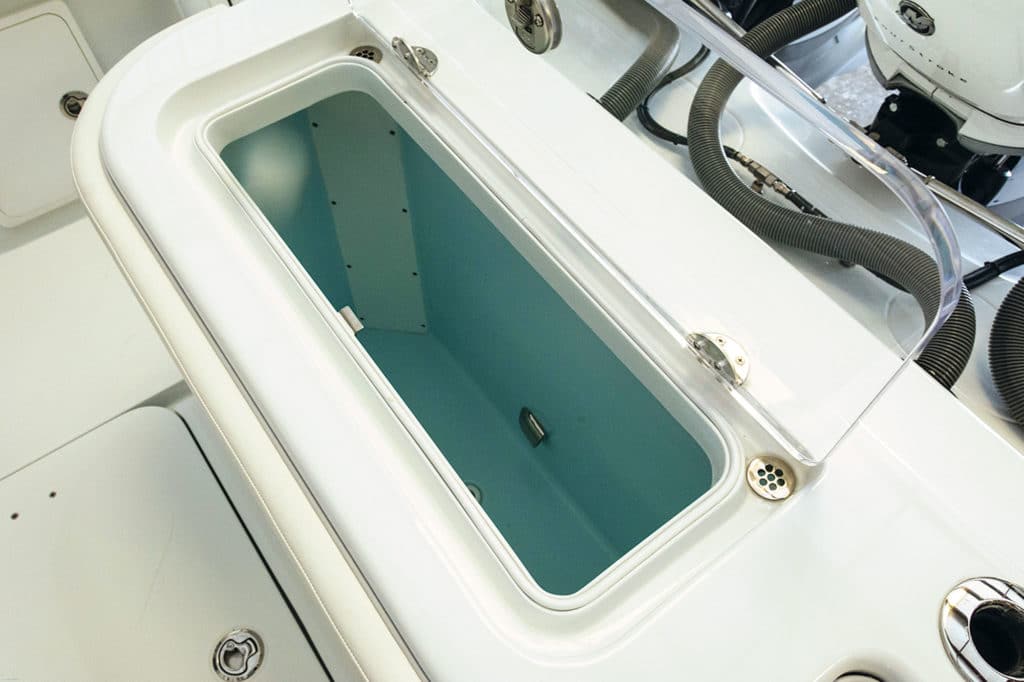
Since its debut, the 36 continues to pique angler interest; more than 40 per year leave the Yellowfin factory. The company sells directly to its consumers, so each vessel becomes a custom project.
When Sport Fishing last tested the 36, in 2009, it reached 68.5 mph at 6,100 rpm. With fuel capacity at 477 gallons, the 36 should have plenty of range for any tournament or overnight fishing trip.
Yellowfin 36 Specifications
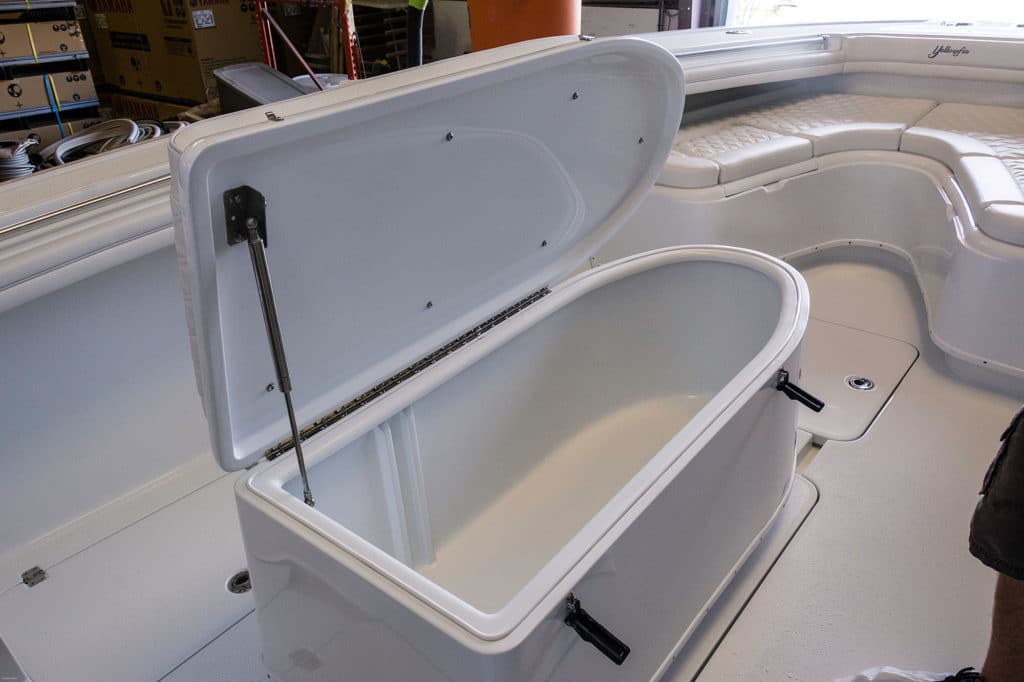
SPECS: LOA: 36 ft. 8 in. • Beam: 10 ft. • Transom Deadrise: 24 deg. • Draft: 1 ft. 8 in. • Dry Weight: 9,500 lb. (w/o engines) • Max Power: 1,400 hp • MSRP: $308,269*

